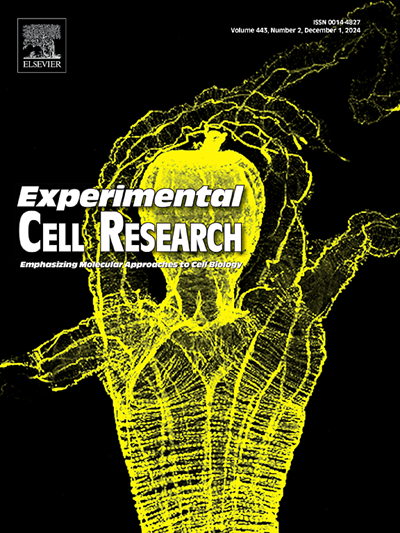Mechanical stretch promotes the migration of mesenchymal stem cells via Piezo1/F-actin/YAP axis
IF 3.3
3区 生物学
Q3 CELL BIOLOGY
引用次数: 0
Abstract
Mesenchymal stem cells (MSCs) have self-renewal ability and the potential for multi-directional differentiation, and their clinical application has promising prospects, but improving the migration ability of MSCs in vivo is one of the challenges. We previously determined mechanical stretch at 1 Hz with 10 % strain for 8 h can significantly promote MSC migration, however, the molecular mechanism remains poorly understood. Here, we reported that the expression and activity of yes-associated protein (YAP) are upregulated after mechanical stretch. As a classical inhibitor of the YAP-TEAD activity and YAP protein, the treatment of verteporfin (VP) suppressed mechanical stretch-promoted MSC migration. We also observed F-actin polymerization after mechanical stretch. Next, we used Latrunculin A (Lat A), the most widely used reagent to depolymerize actin filaments, to treat MSCs and we found that Lat A treatment inhibits MSC migration by suppressing YAP expression and activity. In addition, the protein expression of Piezo1 was also upregulated after mechanical stretch. Knockdown of Piezo1 suppressed mechanical stretch-promoted MSC migration by restraining F-actin polymerization. Together, these findings demonstrate the role of Piezo1/F-actin/YAP signaling pathway in MSC migration under mechanical stretch, providing new experimental evidence for an in-depth understanding the mechanobiological mechanism of MSC migration.

机械拉伸通过Piezo1/F-actin/YAP轴促进间充质干细胞的迁移
间充质干细胞(Mesenchymal stem cells, MSCs)具有自我更新能力和多向分化潜力,其临床应用前景广阔,但提高MSCs在体内的迁移能力是挑战之一。我们之前确定了1 Hz、10%应变的机械拉伸8小时可以显著促进MSC迁移,然而,分子机制仍然知之甚少。在这里,我们报道了机械拉伸后yes相关蛋白(YAP)的表达和活性上调。作为YAP- tead活性和YAP蛋白的经典抑制剂,维替波芬(VP)抑制了机械拉伸促进的MSC迁移。我们还观察了机械拉伸后的f -肌动蛋白聚合。接下来,我们使用最广泛用于解聚肌动蛋白丝的试剂Latrunculin A (Lat A)处理间充质干细胞,我们发现Lat A处理通过抑制YAP的表达和活性来抑制MSC迁移。此外,机械拉伸后Piezo1的蛋白表达也上调。敲低Piezo1基因通过抑制f -肌动蛋白聚合抑制机械拉伸促进的MSC迁移。总之,这些发现证明了Piezo1/F-actin/YAP信号通路在机械拉伸下MSC迁移中的作用,为深入了解MSC迁移的机械生物学机制提供了新的实验证据。
本文章由计算机程序翻译,如有差异,请以英文原文为准。
求助全文
约1分钟内获得全文
求助全文
来源期刊

Experimental cell research
医学-细胞生物学
CiteScore
7.20
自引率
0.00%
发文量
295
审稿时长
30 days
期刊介绍:
Our scope includes but is not limited to areas such as: Chromosome biology; Chromatin and epigenetics; DNA repair; Gene regulation; Nuclear import-export; RNA processing; Non-coding RNAs; Organelle biology; The cytoskeleton; Intracellular trafficking; Cell-cell and cell-matrix interactions; Cell motility and migration; Cell proliferation; Cellular differentiation; Signal transduction; Programmed cell death.
 求助内容:
求助内容: 应助结果提醒方式:
应助结果提醒方式:


